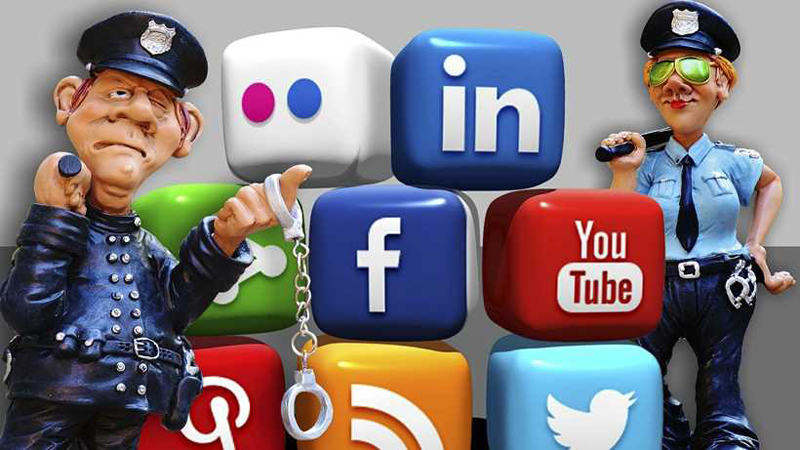Imagine running into a police officer at every turn you take in the street today. And everytime somebody looks ‘suspicious’ you can just wave to the officer to safeguard you. Will you call that safe or sneaky?
Although social media cannot completely safeguard you from all troubles imaginable, even if the whole of police department follows you on twitter, it might provide a sense of strength in the device we often find entertainment and empowerment in.


Police departments; from across the world have joined social media platforms like Twitter, Facebook and WhatsApp to engage with the public.
According to a study by Fernandez, Dickson and Alani (2017). Metropolitan police (MET), Jersey, National Crime Agency and Scotland are one of the engaging police departments on Twitter. But why the sudden shift to social media for police matters? And more importantly- is it helping?
Social media platforms allow for a unique ‘push and pull’ force, unparalleled to anything which can be done by a huge police station in any zip address. Police personnel often use their personal accounts to reach out to the public. It helps them gain information on what is happening (pull) and reach out to help and intervene when they can (Push). This creates feelings of trust, safety, improved vigilance and affection in the public and showcases an immense “organizational citizenship behavior*” on the part of the police personnel.
Law enforcement departments have time and again complained of feeling ‘mistrusted’ or ‘un-approachable’ to the public and their immediate needs. Social media handles just that! It allows one to Tweet or Post their problems/situations/incidents and wait for a lucky response from a person who can provide help. Police can also disseminate information quicker (and not to mention the very cost-efficient channels) which often travels far and wide.
While all this seems ‘perfect’, a lot of risky business is also happening underneath. Most posts made by people in distress have an emotional undertone, which is hard to ignore. However, if some completely human police personnel do ignore the ‘message’ or is unable to deal with it, the trust will be lost faster than it was build. This also creates a situation of open backlash which is de-motivating and hurtful to the entire institution.
Also, since problems don’t check if we use social media actively or not before arriving, the section of the population not on twitter or other channels is unable to access this quick help. It might also not be natural for a lot of us to “Tweet” when we just got stabbed in the leg.
But that’s just it. Like every other endeavor, this one has its share of issues as well. That said, the efforts of anybody (be it police or a stranger) to go beyond what is required and to reach out when you are looking for help, is outstanding. The power of social media to seek and give help is now unquestionable, especially when there is never a moment we are not blogging about things!
*Organizational Citizenship Behavior- Organizational citizenship behavior (OCB) is referred as set of discretionary workplace behaviors that exceed one’s basic job requirements
Reference: Fernandez,M. Dickson, T., Alani, H. (2017) An Analysis of UK Policing Engagement via Social Media. Social Informatics. 13-15. ISSN 0302-9743




